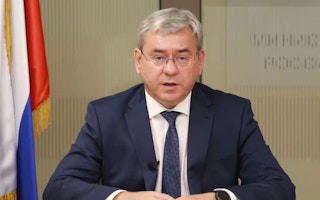Russia is promoting natural gas as an “eco-friendly” energy source for Southeast Asia.
In a webinar held on Thursday (15 July) by the Moscow-headquartered Russia-Asean Business Council and the Russian Energy Agency, speakers representing Russia said the fossil fuel was the cleanest and cheapest way for the Association of Southeast Asian Nations (Asean) to shift to away from polluting coal and diesel to a low-carbon economy.
In the virtual dialogue titled ‘Promoting use of natural gas as ecological friendly fuel in Asean’, the director general of the Russia Energy Agency, Alexey Kulapin, said natural gas has been called upon as “the world’s transition fuel” and is a “cost efficient, low-carbon” solution for the regional bloc to meet its energy demands, which are expected to rebound as the region recovers from the Covid-19 pandemic.
Russia is the world’s second biggest natural gas producer, and has been forging closer strategic ties with Asean in recent months amid tension between the United States and China, Asean’s traditional trade partners. Kulapin said that Russia could cooperate with Asean in areas such as financing, manufacturing, distribution and engineering.
Natural gas is second only to renewable energy as Southeast Asia’s fastest growing fuel source, growing at 3.8 per cent per year, according to the Economic Research Institute for Asean and East Asia (ERIA), and is a potential growth market for Russia as the appeal of gas as a transition fuel is called into question elsewhere.
The pandemic has put a dent in energy demand growth forecasts in key markets such as the United States, China, Europe, South Korea, and Japan, and a raft of climate policies that favour green energy have narrowed natural gas’ position as a bridge fuel, experts say.
We believe that promoting natural gas as an ecologically friendly fuel could strengthen the existing potential [for cooperation] among our countries.
Ivan Polyakov, chairman, Russia-ASEAN Business Council
But in Southeast Asia, natural gas is primed for growth in a region that is still dominated by coal, a fuel that generates double the emissions of gas, commented Beni Suryadi, manager of power, fossil fuel, alternative energy and storage at Asean Centre for Energy, a Jakarta-based energy think tank. While coal is still likely to be Southeast Asia’s major fuel source by 2040, natural gas is “less exposed to carbon policy risks”, he said on the webinar.
Even the region’s big coal-producing countries are responding to international pressure to squeeze coal out of the energy mix, because of the fuel’s inherent climate risks. Indonesia plans to ban new coal development by 2023, and the Philipppines announced a coal moratorium late last year. Meanwhile, gas is a stable presence in the region; Brunei, Singapore and Thailand use natural gas for almost all of their energy, and the fuel is growing in the energy mix in Malaysia, Indonesia and Vietnam.
Sergey Tulinov, economic affairs officer, energy division, for United Nations Economic and Social Commission for Asia and the Pacific (UNESCAP), said on the webinar that gas could hasten the phase-out of coal, which he called “the most polluting fossil fuel”, and support the development of renewables.
“For some Asean countries, switching from coal to renewables is not feasible currently. Gas is the ideal transition fuel to supply enough energy for power generation to support renewable energy,” he said.
He added that natural gas could play a “substantive” role in achieving all three targets in Sustainable Development Goal 7 — affordable, reliable, sustainable and modern energy.
But speakers pointed to challenges for natural gas adoption in Asean, such as price volatilty and supply.
Ho Quang Trung, director of the Asean Secretariat, said he had hopes for the trans-Asean gas pipeline (TAGP) in connecting the region to a stable gas supply, although experts have said that the faster build-out of LNG import terminals is draining the relevance of a pipeline that was conceived of in the 1980s.
Trung said that Asean “values cooperation” with Russia on future energy projects, which could include using small-scale liquid natural gas (LNG) to power remote islands that currently rely on diesel. Other proposed uses were in cooking as a cleaner alternative to traditional wood stoves, in compressed form for transport, feedstock for fertilisers and pharmaceuticals, and in support of the emerging hydrogen fuel sector.
Globally, gas demand dipped in 2020, and is projected to recover and rebound this year, driven by demand in India, China and also Southeast Asia, according to International Energy Agency (IEA) data.
But roadblocks lie ahead, even in Southeast Asia, because of the inherent climate risk of extracting, transporting and burning natural gas, which is prone to leaks of methane, a greenhouse gas 100 times more powerful than carbon dioxide.
Asian Development Bank recently issued a draft energy policy pledging to stop financing any natural gas field exploration to support the low-carbon transition in the region. The IEA projected in its recent roadmap for reaching net-zero emissions by 2050, gas consumption will be 55 per cent lower than it is today.

















